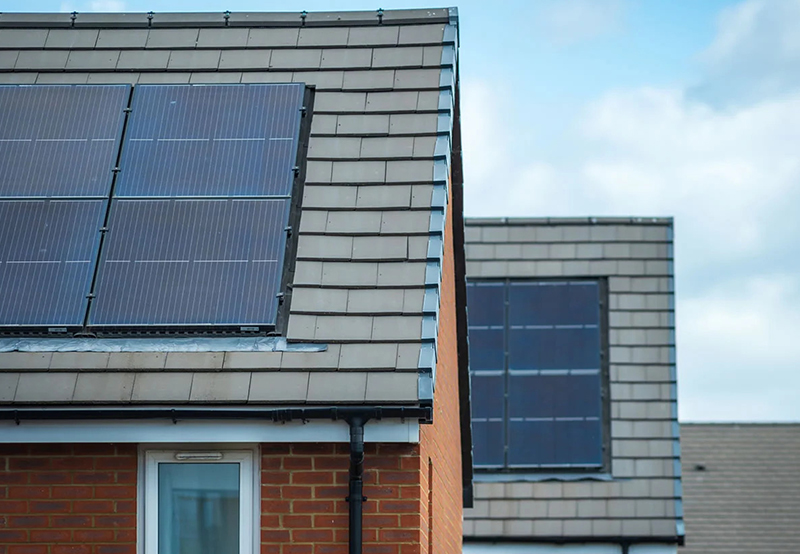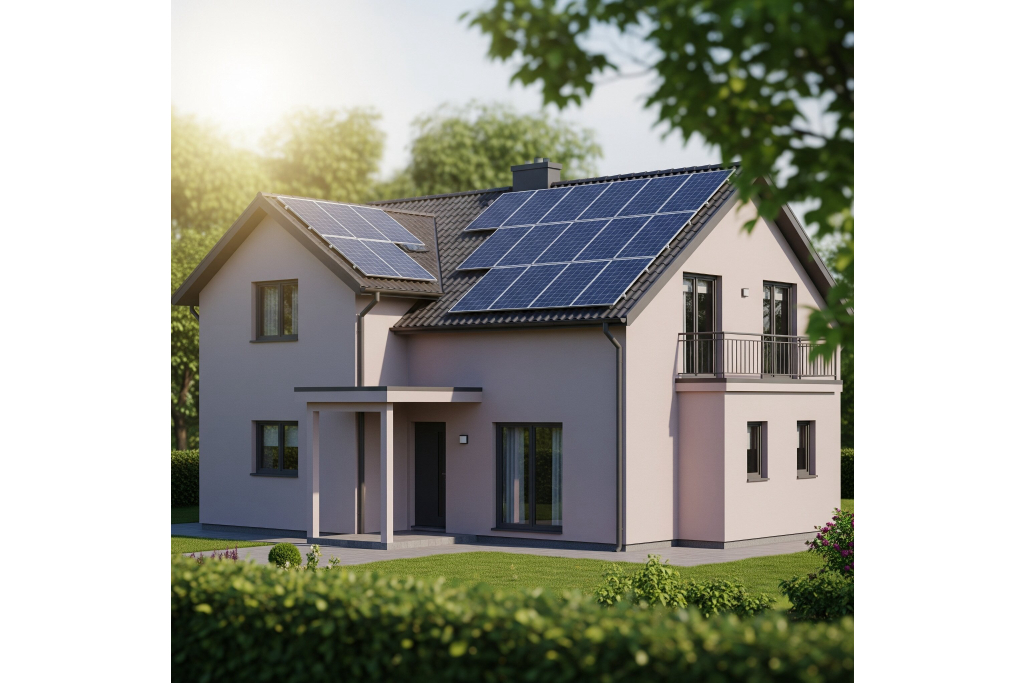Transition Your Home to 100% Renewable Energy
Due to increased awareness of the environmental problems in the world, the shift to renewable energy is as relevant as never before. Your carbon footprint is one of the best things to reduce and switching your home to 100% renewable energy is one of the best things you can do to make a positive change. In this holistic guide, we will demonstrate how you can have an energy efficient sustainable home by implementing some renewable energy alternatives such as solar power.

What is Renewable Energy for Homes?
Renewable energy is described as energy produced on resources that can be reproduced naturally which are sunlight, wind and water. With renewable energy; you will also be using sustainable energy sources in your home and this automatically cuts down on the amount of dependence on fossil fuels. The most well known renewable energy ones available on residential premises are:
- Solar Power: The use of the Sun to produce electricity.
- Wind Energy: The generation of wind energy by means of installation of small scale turbines.
- Hydro power: The electric power that is generated using the flow of water, which is less popular in home arrangement.
Using renewable energy in your home will save you money, but also it will help mitigate greenhouse gas emissions, thus actively participating in environmental sustainability.
Why Transition to 100% Renewable Energy?
Use of 100 percent renewable energy offers numerous advantages, not only to your home but also to the planet. The following are but a few:
- Added Value to Property: Properties with renewable energy systems sell well, and can even raise the value of property.
- Decrease Carbon Footprint: Since renewable sources of energy do not produce much or even any green house gas emissions, they are one of the most effective methods of addressing the issue of climate change.
- Save Money: Depending on specific systems of renewable energy such as solar panels, most of the systems can reduce the cost of your electric bills once a long-term investment in its installation has been made.
- Energy Independence: When you produce energy yourself you will not be so dependent on other sources giving you the ability to control your power source.
Step-by-Step Guide to Transitioning Your Home to Renewable Energy
1. Start with an Energy Audit: It is important to determine what your energy usage is, before jumping into renewable energy solutions. An energy audit will determine the level of energy that your home requires, as well as point out those areas where you can cut down. This may include examination of your windows, appliances, heating systems and your insulation. Lessening the amount of energy that you need in general can make moving over to renewable energy much simpler and cheaper to execute.
2. Consider Solar Power for Your Home: One of the most popular and effective ways to transition to renewable energy for homes is through solar power. A solar-powered house is an excellent investment for the future, as solar panels can provide clean, renewable energy by capturing the sun’s rays and converting them into electricity.
Why Solar?
- Low Operating Costs: Once installed, solar panels require minimal maintenance and provide free energy from the sun.
- Long-Term Savings: Although the initial cost can be high, the savings on electricity bills can make it worthwhile over the long term. Many homeowners see a return on their investment within 7-10 years.
- Incentives: Many governments offer incentives and rebates to encourage the adoption of solar energy, reducing upfront costs.
How to Install Solar Panels
- Assess Your roof: You need lots of sunlight to make the solar panels work. Determine how much sun your roof receives and is there any obstruction by shadows of trees and other nearby buildings.
- Select a Solar Installation Company: Going with a solar installation company to assist you in choosing the best panels fit to put on your home and seat on the cosmic experience with the pleasure of having cost effective power to run lights, fridges, TVs, toys etc., is worthwhile.
- Grid-Tied or Off-Grid: You are going to have to decide whether you would prefer to have your solar panels be grid-tied (part of the local electricity grid) or off-grid (not part of any grid). Grid-tied systems enable you to sell excess energy that may be produced back to the grid whereas off-grid systems would necessitate a battery storage solution.
3. Energy-Efficient Homes: Along with solar panels, you can make your home more energy-efficient through small yet impactful upgrades. These changes help to reduce energy demand, making it easier to meet all your energy needs with renewable sources.
- Increase Insulation: Getting the right insulation in your house may save you more energy on heating and cooling of the home.
- Appliances: Replace your appliances with energy efficient ones (e.g. LED lights, energy star rated refrigerator) which use less power.
- Smart Thermostats: To ensure that temperature management is optimal in your house, it would be wise to fit your home with a smart thermostat to cut down the amount of energy needlessly spent controlling temperature.
- Install Energy Saving Windows: Double-glazed windows are a good way to avoid heat leakage, thus helping you lessen your reliance on air-conditioning and heating.
Such measures make your residence more energy-efficient and guarantee that your demands can be met with the available systems of renewable sources reliably.
4. Wind and Other Renewable Energy Sources: Although solar energy is the most common source of renewable energy that one can use in the home, there is another source of renewable energy known as wind energy as long as you reside in a place where the winds are predictable. Your wind generators can be small residential wind turbines producing the power needed to run your home. Wind power may however be harder to deploy since it is location specific, and implementations may be expensive and local permits must be acquired.
5. Consider Energy Storage Systems: Because having a consistent energy supply is important to you, you will need a storage system of the energy that your renewable source produces. Storing surplus energy produced during the day is only possible with the help of battery storage systems like Tesla Powerwall which allocates that surplus energy that has been generated during the day to night use or cloudy days. This comes in very handy in households which have solar powered energy in a situation when the sun fails to shine.
6. Consider Offsetting Remaining Energy Needs: You cannot use 100 percent renewable energy to meet your needs, and in this case, many homeowners opt into offsetting their energy use by using the services of a green energy program provided by their utility company. Through these programs, you can purchase renewable energy certificates (RECs) in order to purchase renewable energy to offset the consumption of energy in fossil fuels.
Challenges to Transitioning to Renewable Energy
While transitioning to 100% renewable energy is an excellent decision for your home and the planet, there are some challenges that you may face:
- Initial Cost: Solar panels, wind power or energy storage systems can be costly to install. Nevertheless, this investment can be justified by long-term savings.
- Weather Dependency: Both the solar and the wind energy are dependent on weather conditions. Solar energy depends on sunlight whereas wind energy is dependent on the performance of winds. Yet, this problem can be alleviated by using battery storage.
- Local Regulations: You could have some form of local zoning laws, permitting or homeowner association policies that restrict equipping of renewable energy resources (particularly solar panels and wind turbines).
How to Make the Transition Affordable
And here are some of the solutions on how the transition to the renewable energy can be made less expensive:
- Solar Leasing or Power Purchase Agreements (PPAs): When your budget cannot cover the initial cost of solar panels, you may consider leasing or signing a Power Purchase Agreement (PPA) where a third party will install and maintain the solar system and your payment to the electricity it generates.
- Government Incentives and Tax Credits: A lot of governments provide rebates, incentives or tax breaks to home owners installing solar panels or other forms of renewable energy.
- Group Purchasing Programs: In certain communities, there are group buying programs; where, homeowners are allowed to negotiate better prices through a group building process in regard to the solar panel installations.
Conclusion
The process of changing your home to all renewable energy is one of the most influential ones to improve the future as more sustainable. Regardless of whether you go with solar and use solar-powered systems, wind turbine power or bleed both, heating and cooling your home efficiently using green energy in homes can save you cash, minimize your carbon footprint, and help create a healthier world.
To move to renewable energy in your home means taking charge of the energy that you use, the healthier sources to power your home, and a long-lasting impact on future generations. Begin by doing an energy audit, investigating solar energy and small home improvement steps to make your house energy-efficient. Not only will you have made your living space more comfortable and more sustainable but also contributed to the world becoming greener and cleaner.
Frequently Asked Questions (FAQs)
Renewable energy for homes refers to energy generated from natural sources like sunlight, wind, and water, which are replenished naturally. Common options for residential homes include solar power, wind energy, and small-scale hydropower systems.
Switching to renewable energy helps reduce your carbon footprint, lower energy bills, and contribute to environmental sustainability. It also enhances your home’s value and provides energy independence by reducing reliance on fossil fuels.
Solar power works by using solar panels to capture sunlight and convert it into electricity. These panels are typically installed on your roof and are connected to an inverter, which transforms the sunlight into usable energy for your home. Any excess power can be stored in batteries or sent to the grid if you have a grid-tied system.
The main benefits of solar power include:
Reduced energy bills: Solar energy can significantly cut down your electricity costs.
Environmentally friendly: Solar power is clean and reduces greenhouse gas emissions.
Low maintenance: Solar panels require little maintenance once installed.
Increased property value: Homes with solar systems are often valued higher in the market.
The cost of installing solar panels depends on various factors, including your location, the size of your home, and the type of solar system you choose. While the initial investment can be significant, incentives, rebates, and long-term savings on energy bills often make it a worthwhile investment. Many systems pay for themselves over 7-10 years.












